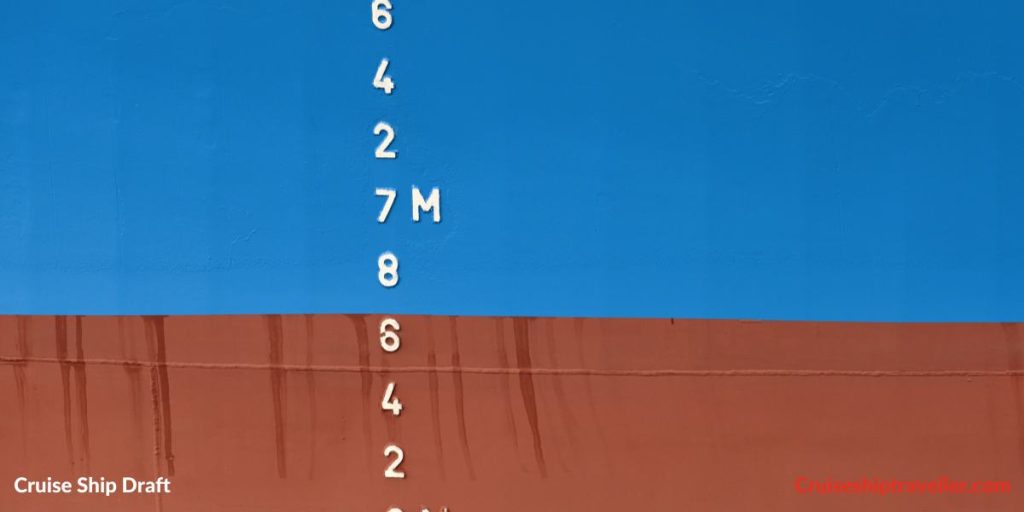When you see the size of some modern-day cruise ships, especially the mega cruise ships it’s common for people to wonder how much of the cruise ship is underwater compared to the huge amounts we see above the waterline.
The answer might come as a surprise because, in relation to the size of the cruise ship, surprisingly, little of the ship is actually underwater.
How Much of a Cruise Ship is Under water?
Usually, about 10% of a cruise ship’s overall height is under the water. This equates to about 30ft for large cruise ships. The underwater part of the ship’s hull is typically wide at the back narrowing towards the bow.
It usually correlates proportionally that the larger the cruise ship is, the deeper the cruise ship drafts will be, but on average, this will still be around 10% of the ship’s total height.
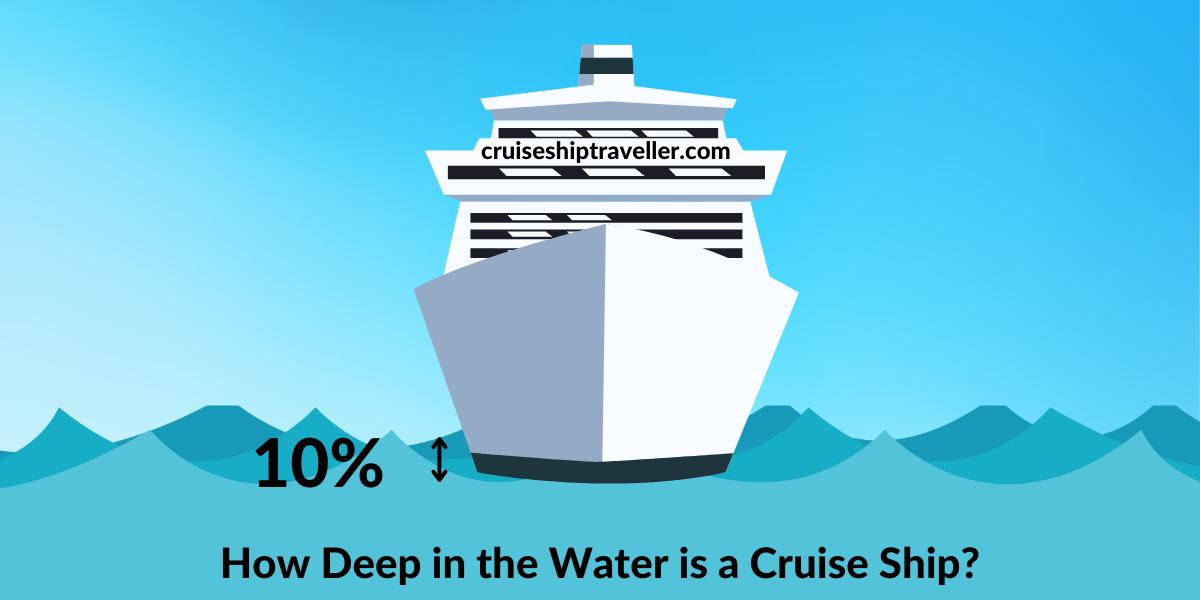
For some, this begs the next question, how do cruise ships not tip over?
While only 10% of the cruise ship is underwater, the bulk of the ship’s weight is contained with this lower portion ensuring a low center of gravity.
The larger the cruise ship and the more decks it has, all adding to the ship’s weight, the more you can expect it to sit in the water.
How Deep Do Cruise Ships Sit In The Water?
For a cruise ship to float it must displace as much water equal to the weight of the cruise ship. This typically equates to only 10% of a cruise ship’s total height sitting in the water.
Depending on the size of the cruise ship this will be the range of 20ft to 30ft. This is known as the draft and should be marked on the cruise ship’s hull, typically on the bow and the stern.
This is a lot shallower than many other types of ships which are not as high but have deeper drafts.
The cruise ship draft is important because it determines which ports the cruise ship can enter safely without any part of the ship coming into contact with the floor of the docking area. An accident no one onboard wants to experience.
Waterline Depth Indicators on the Cruise Ship
Draft Mark Measurement Scale
A draft mark measurement scale can be seen on either side of the ship’s bow and stern where the waterline is, indicating the current draft level.
Here you can find out more about draft marks.
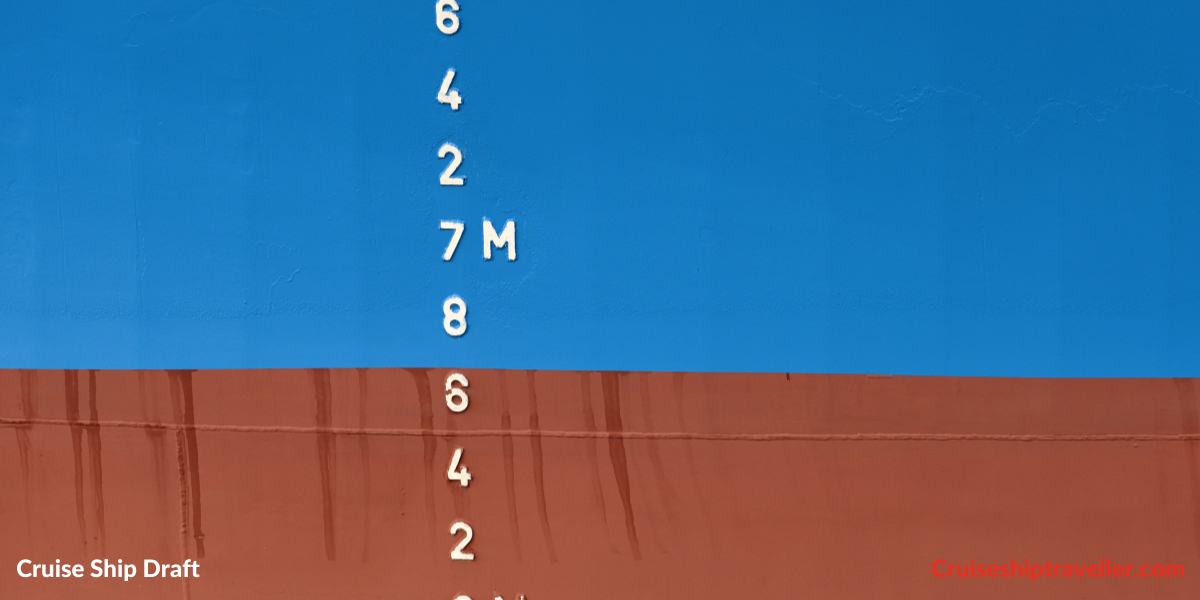
Plimsoll Lines
On the side of a cruise ship is what’s known as the Plimsoll Line. When the water line is on the plimsole line, this represents the maximum amount of weight the ship can carry.
The Plimsoll lines indicate different waterline limits for various water conditions and water types.
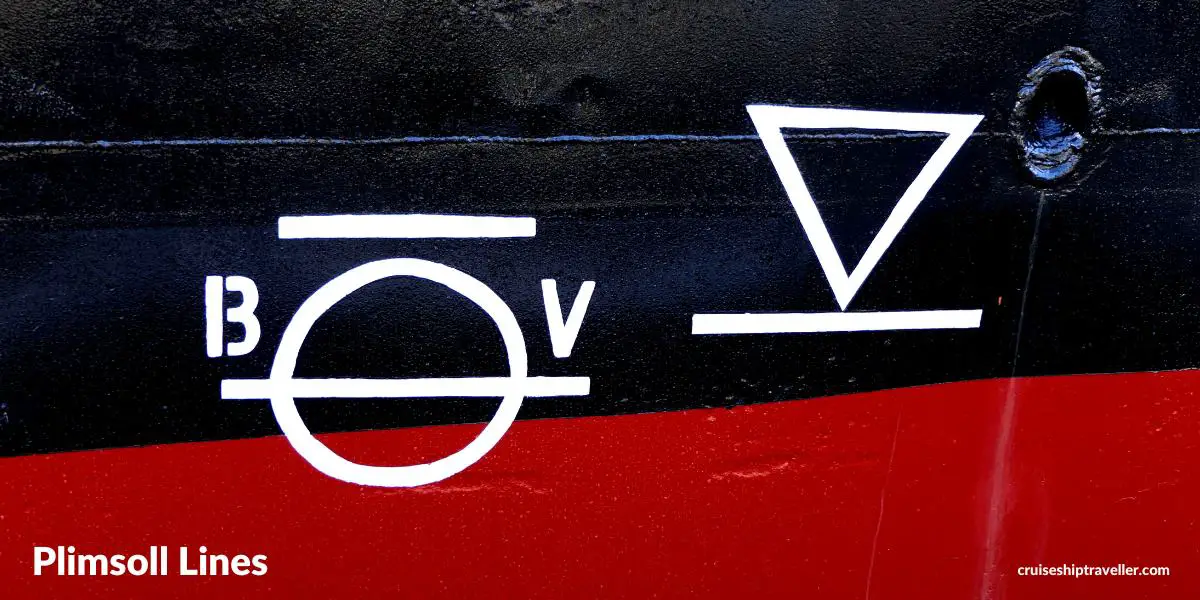
How Many Decks are Underwater on a Cruise Ship?
Depending on the size and type of the cruise ship, there are typically one or sometimes two decks underwater. These will not be deck names or numbers you’ll see on a deck plan because they are out of bounds for passengers.
Even if the deck plan of a cruise ship starts at Deck 1, it doesn’t mean that it is the lowest deck on the ship. It’s just the lowest for passengers.
These lower decks will consist of hundreds of crew cabins to provide living and sleeping space for the staff who live onboard.
The lower decks also need to house the following:
- Various engine and mechanical rooms
- Food storage units
- Laundry
- Medical Center
- Jail
- Morgue
- Crew-only social rooms
The Majority of Ships Weight is Underwater
The majority of the cruise ship’s weight is underwater, this maintains the ship’s low center of gravity which is a vital factor for keeping the ship stable and upright and preventing the cruise ship from tipping over.
Fuel and freshwater tanks can hold thousands of tonnes.
Machinery and masses of plumbing in the engine rooms, as well as air conditioning, take up vast areas and add considerable weight to the lowest desks.
Do Cruise Ships Have Staterooms Underwater?
There are no staterooms under the water level on any cruise lines. There are only cabins for crew members to live and sleep in. These are quite small and windowless.
We have covered more depth here underwater rooms on a cruise ship, including rare occurrences that offer an ocean view.
Related Reads:
What Parts of a Cruise Ship Are Underwater?
On the bottom of a cruise ship, various features are out of sight when the cruise ship is underwater.
Bulbous Bow
At the bow, cruise ships have a bulbous bow, a large projection that extends out and modifies the water flowing down the side of the hull.
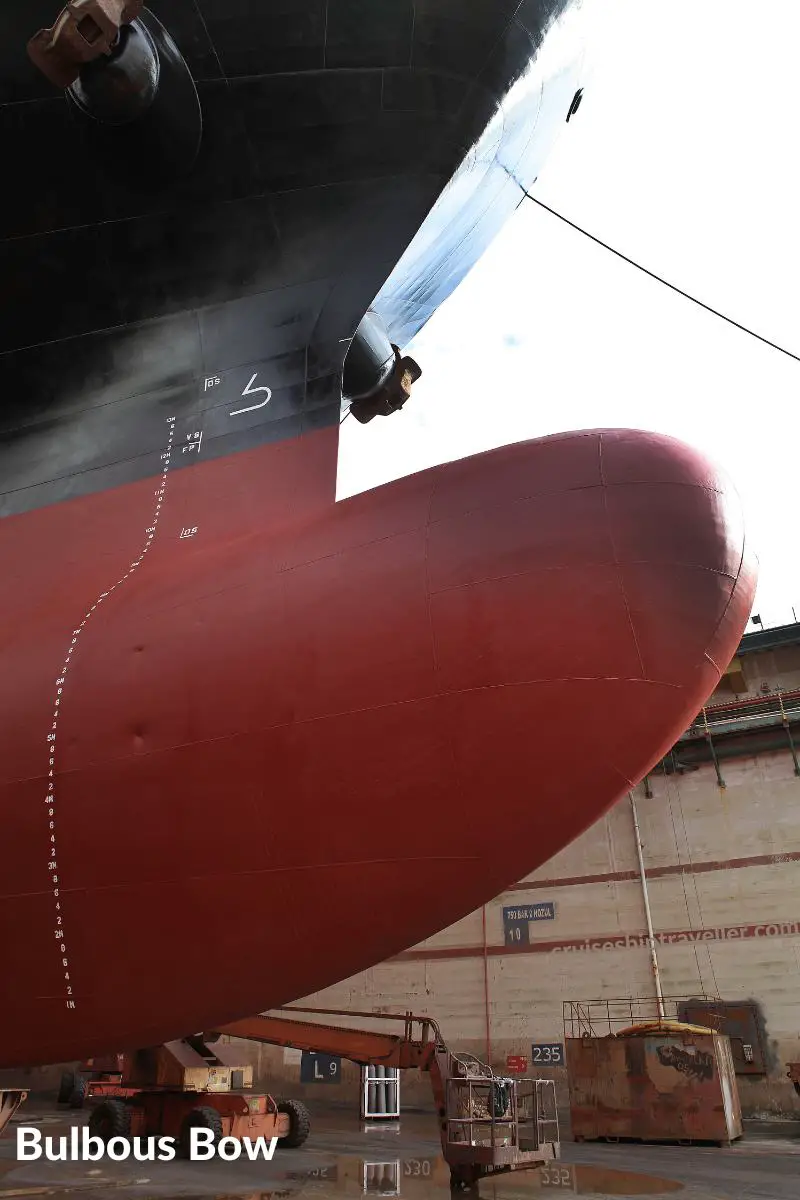
Propellers
At the stern, you will find the propellors designed to push through the water to propel forwards or even backward in some cases.
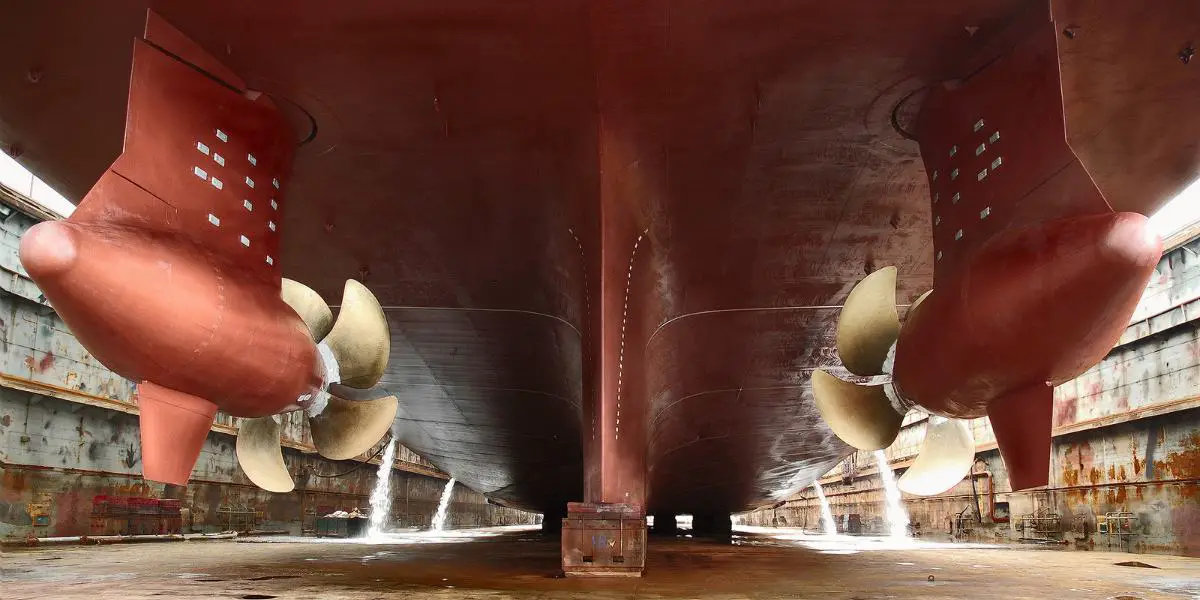
Hull
Cruise ships tend to have wide U-shaped hulls that are under the water. These displace large amounts of water which increases the buoyancy force required to keep such large, heavy vessels afloat.
How Much Water Does a Cruise Ship Need to Dock?
A cruise ship will generally need an extra 3 to 4 meters or 9 to 12 ft on top of the ship’s draft to dock.
If a cruise ship has a 30ft draft, it would need water depths of at least 40ft to sail safely. The extra depth is to allow for the ships bouncing movement in the water.

